The Witcher Franchise: From RPG Classic to Global Phenomenon
The Witcher series has grown from a cult RPG rooted in Slavic fantasy to a worldwide sensation, spanning acclaimed games, spin-offs, and a hit Netflix adaptation. Explore the evolution of Geralt's journey, the impact of the show, and the future of the franchise with The Witcher 4: Polaris.
The Witcher is a legendary role-playing game series that has evolved from Andrzej Sapkowski's Slavic fantasy universe into a global cultural phenomenon. Starting with the 2007 debut from a then-small Polish studio, the Witcher franchise has won the hearts of millions. Over three main entries, the story of Geralt of Rivia transformed from a tight RPG on an aging engine into a vast open-world epic, earning multiple "Game of the Year" accolades. Along the way, spin-offs like card games and narrative side stories were born, and Sapkowski's original books soared to new popularity. Even Netflix's adaptation played a role, introducing the series to a legion of new fans. Let's trace this journey-from the origins of the first game to the upcoming Polaris project (The Witcher 4)-exploring the evolution of gameplay, technology, and The Witcher's lasting legacy.
The Beginning of a Legend: The Witcher (2007)
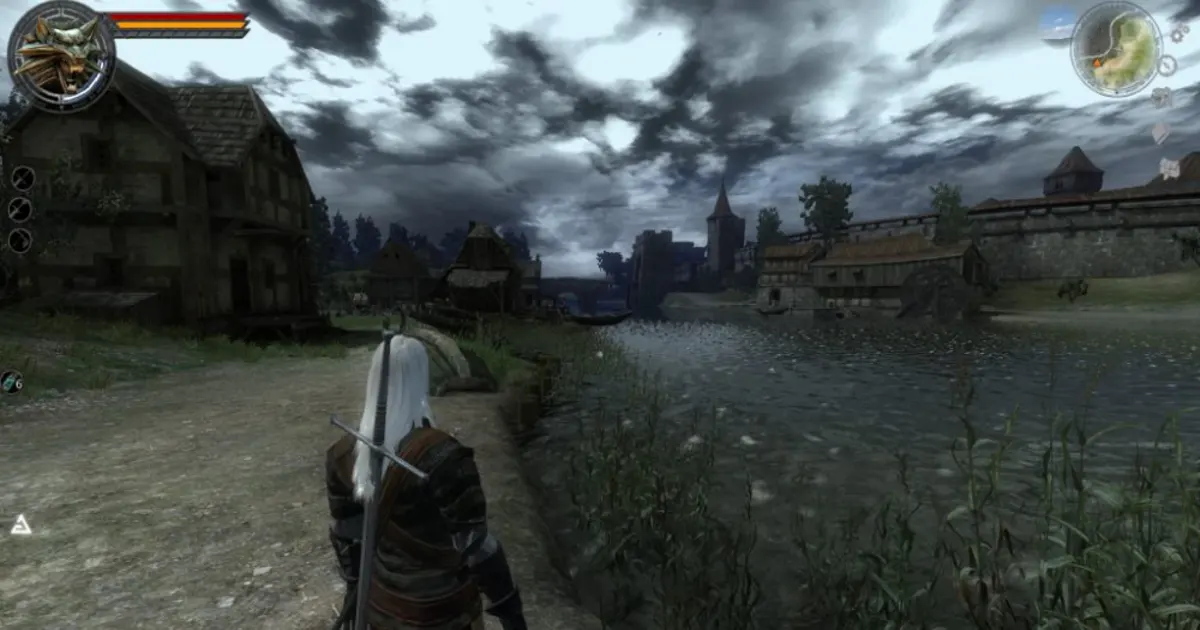
The first game, released by CD Projekt RED in autumn 2007, launched Geralt of Rivia's virtual adventures. The storyline picks up after the events of the books: presumed dead, Geralt miraculously returns to life but suffers from amnesia, relearning his craft as a witcher. The game, grounded in Sapkowski's world, faithfully conveys its dark atmosphere, though the author himself never considered the game's story canonical. Geralt joins his brothers from Kaer Morhen to repel a bandit assault by the Salamandra organization, then journeys across Temeria. Throughout the narrative, players face moral choices that impact events and lead to multiple possible endings. This branching, non-linear storytelling became a series hallmark: every decision-whether to save a sorceress or hand her to a mob, side with elven rebels or the knightly order-shapes the world's fate. Such narrative depth sets The Witcher games apart from the linear plots of the novels, letting players "tell their own story" within a familiar universe.
The gameplay blended classic RPG systems with dynamic combat and witcher skills. The battle system featured multiple fighting stances-fast, strong, and group-switchable depending on enemy type. Players had to time their clicks to chain attacks, giving combat a rhythmic feel. Geralt wielded two swords (steel for humans, silver for monsters) and magical signs. Alchemy was essential: players collected herbs and monster parts to brew potions granting temporary abilities-a defining trait of witchers from the books. The world was divided into large areas (Temerian lands near Vizima, swamps, villages) ripe for exploration, packed with NPCs and side quests. Despite limited zones, the developers filled them with content: gambling mini-games, fistfights, and monster contracts.
On the technical side, The Witcher (2007) was built on a heavily modified Aurora engine (from BioWare's Neverwinter Nights). For its time, it showcased impressive visuals: detailed character models, day-night cycles, and realistic torch shadows. Development took around four years, and the debut project's results impressed many critics. The budget-about 19 million zloty-was significant for 2000s Eastern Europe. Reviews praised the engrossing plot, deeply crafted world, music, and unique combat. However, technical shortcomings-bugs, long load times, clunky animations-were noted but understandable for a new engine and team. CD Projekt responded with the 2008 "Enhanced Edition," fixing most issues and adding content. This polished version won even more fans worldwide, laying a solid foundation for future growth. By 2011, the creators were ready to present Geralt's next adventure.
A New Chapter: The Witcher 2: Assassins of Kings (2011)
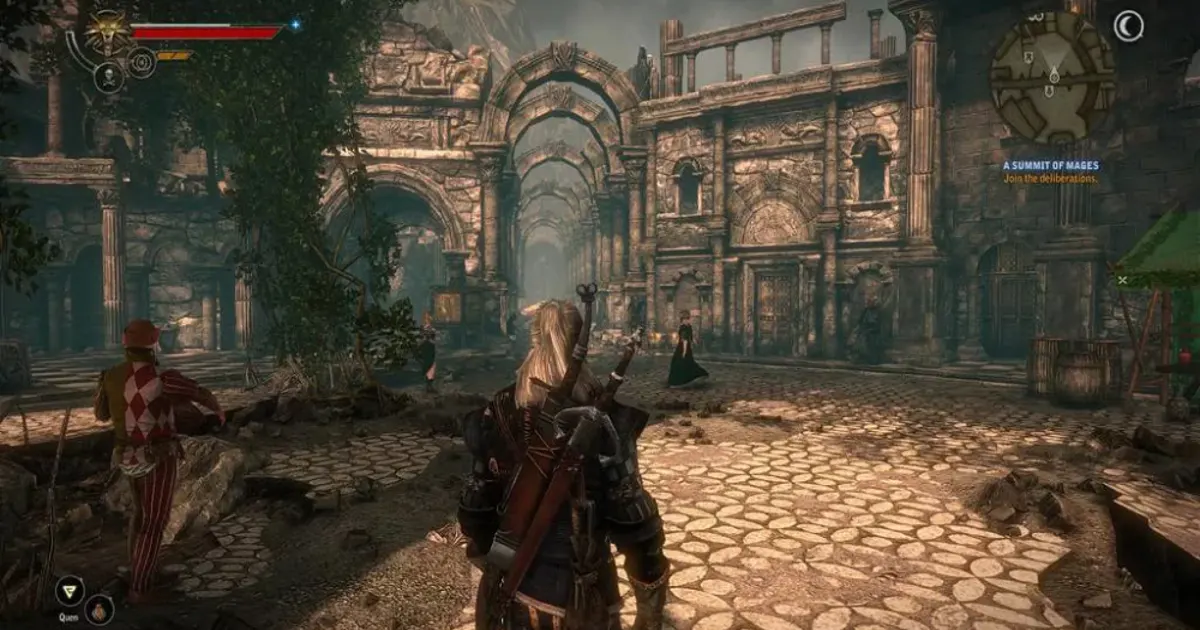
In spring 2011, the second entry-The Witcher 2: Assassins of Kings-directly continued the story. The sequel begins months after the original: Geralt, now famed as King Foltest's savior, is caught in a web of political intrigue. An unknown assassin (another witcher, Letho) is eliminating Northern rulers, and Geralt is wrongfully accused of regicide. The story becomes more mature and political, exploring themes of power, racial strife, and moral ambiguity. Geralt's hunt for the king-slayer uncovers a grand conspiracy, and players must choose allies-special agent Roche or elven rebel leader Iorveth. This choice splits the story: the entire second act unfolds in different locations (Vergen with Iorveth or the Kaedweni army camps with Roche), each with unique quests and characters. Non-linearity is the game's defining feature: choices throughout shape 16 distinct world states by the end-from character fates to the Northern kingdoms' map. While there are fewer cinematic endings, the combination of decisions produces sixteen variations, boosting replayability. This innovative approach aimed for every player to live their own version of the story, sparking debate and comparison.
The gameplay evolved significantly. Combat became more action-oriented, dropping timed clicks for free-form combos, dodges, and blocks. Geralt gained new tactics like setting traps and throwing knives. Controls and camera were overhauled, especially for the 2012 Xbox 360 port. While the world remained chapter-based, side quests grew deeper, dialogues more cinematic, and environments more interactive. In some chapters, players could freely explore a layered city full of secrets and subplots. The RPG system kept skill leveling but added distinct ability trees (sword mastery, signs, alchemy), encouraging varied playstyles. Combat difficulty increased-enemies grew smarter, requiring thoughtful use of potions, bombs, and signs. Moral dilemmas became iconic-for example, deciding a sorceress-terrorist's fate or whether to intervene in pogroms against nonhumans-with no "right" answers.
Technologically, the sequel was a leap forward. Abandoning the Aurora Engine, CD Projekt built their own REDengine for nonlinear RPGs with modern graphics. The Witcher 2's visuals stunned at release: dynamic shadows, advanced surface effects (normal/parallax mapping), and realistic weather. Textures, lighting, day-night cycles, and rain were all greatly improved. Character animations and cinematic cutscenes rivaled top Western RPGs, making the narrative even more engaging. The interface was streamlined and adapted for gamepads, earning praise for usability. The game launched on PC and later on consoles, expanding its audience. Critics and players responded enthusiastically: Metacritic scores averaged 88/100. The deep branching story, improved combat, and visuals were widely lauded as a major CD Projekt milestone. The studio's reputation soared, and the Witcher universe gained global fans. With the story's end (leaving some threads unresolved, especially Yennefer and the Nilfgaard war), all eyes turned to the most ambitious chapter yet.
The Trilogy's Climax: The Witcher 3: Wild Hunt (2015)
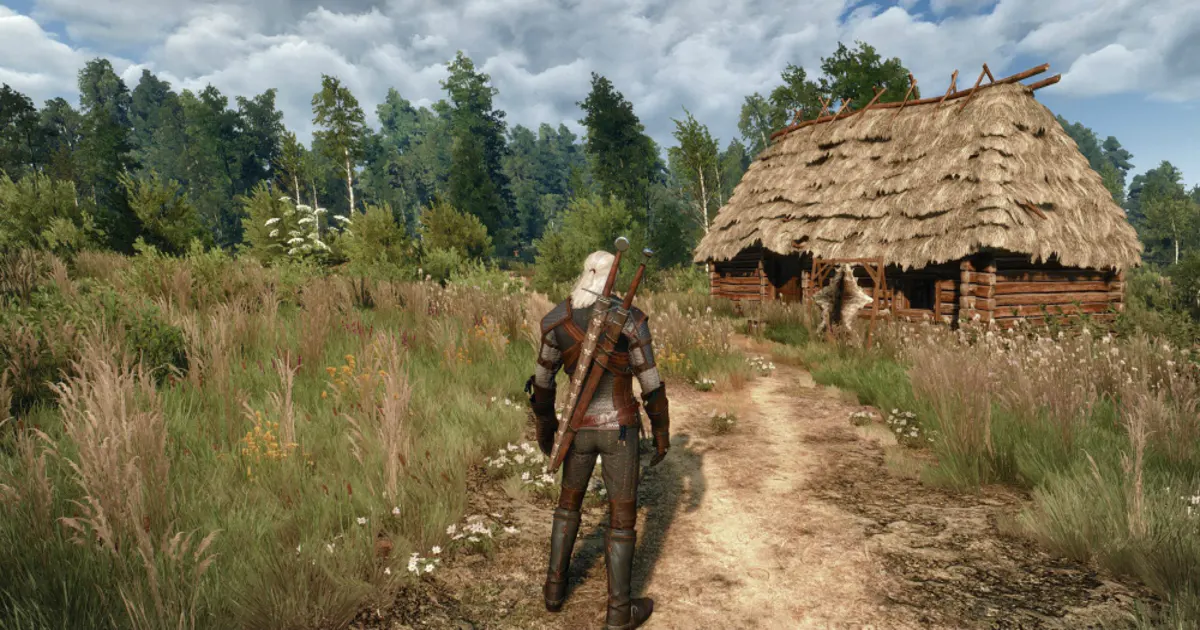
May 2015 saw the release of The Witcher 3: Wild Hunt, the series' most acclaimed entry and CD Projekt RED's crowning achievement. The narrative concludes Geralt's journey: reunited with his beloved Yennefer, he becomes Emperor Emhyr's personal tracker, searching for Ciri-his adopted daughter with Elder Blood. Ciri is pursued by the supernatural Wild Hunt, spectral riders who bring winter and death. Geralt's quest takes players across the Northern Kingdoms-from war-torn Velen and the free city of Novigrad to the scenic Skellige Isles. The game masterfully weaves personal tales (Geralt's relationships with Ciri, Yennefer, Triss) with an epic fantasy plot about the world's fate. Many characters and details are drawn from Sapkowski's saga-bards like Dandelion, druids like Ermion, the Lodge of Sorceresses-but the game forges its own path, not retelling the books but continuing them. The finale hinges on players' choices-Ciri's destiny as empress or witcher, Geralt's fate, and more-resulting in numerous endings (about 36 variations), depending on decisions in main and side quests. This level of non-linearity and open-world scale was unprecedented for the genre.
The main innovation: a fully open world. Unlike previous chapter-based games, Wild Hunt lets players roam massive regions seamlessly. Developers created several vast areas: gloomy Velen, bustling Novigrad, snowy Skellige, and more. Each is packed with side quests, monsters, and secrets. Content is immense-over 50 hours for the main story, dozens more for side activities, and 100+ hours for full exploration. Side stories often match full novels in depth, exploring mature, emotional themes. Quests like the Bloody Baron's tragedy or missing peasants set new standards for side content. Players are constantly engaged-monster contracts, treasure hunts, card tournaments, investigations-all woven naturally into the world's fabric.
Gameplay evolved to support this freedom. Combat is fluid-Geralt can fight on horseback, use crossbows, and manipulate the environment (e.g., igniting gas barrels with Igni). New mechanics include improved herb gathering and crafting, equipment customization (upgradeable witcher gear sets), and an interactive world where NPCs' behavior and weather affect tactics. The interface was adapted for the content load: a handy mini-map, quest journal with filters, and bestiary notes all aid the player. Subsequent patches refined the UI and balance, adding alternative controls and HUD options.
One reason for Wild Hunt's cult status is its world's unprecedented detail. Characters feel alive-every dialogue is well-acted and animated, with rich facial expressions. The world bustles with events: soldiers cry for help, rain pours in the woods, travelers and bandits dot the roads. This creates the sense of living in a true fantasy medieval world. Unsurprisingly, Wild Hunt became 2015's Game of the Year for many outlets and is ranked among the decade's best games. By March 2016, sales topped 10 million copies, cementing CD Projekt's global success.
Technically, the third entry was revolutionary. REDengine 3 was built for nonlinear, open-world games, displaying vast locations without sacrificing detail. Graphics set a high bar: dynamic weather (storms, fog, sunsets) created unforgettable scenes-think Skellige's ocean storms or Velen's swamp sunsets. Cutting-edge effects included physically correct lighting, depth of field, and volumetric fog. Enemy damage modeling and ragdoll physics made combat visually stunning. At launch, the game demanded powerful hardware, but the payoff was a breathtaking world, even on consoles. CD Projekt continued improving the game post-release: free DLCs, major expansions (Hearts of Stone, 2015; Blood and Wine, 2016), and even a 2022 "Next-Gen" patch with ultra-HD textures and ray tracing. These add-ons won their own awards, providing a rich epilogue to Geralt's story.
Wild Hunt concluded Geralt's saga on a high note-a project many consider one of the greatest in video game history. Yet the Witcher world didn't end there: CD Projekt experimented with spin-offs and conquered new media, as detailed below.
Spin-Offs in the Witcher Universe
Beyond the main trilogy, the Witcher universe expanded through spin-offs. CD Projekt RED explored other genres to further flesh out Sapkowski's world. The most notable spin-offs are the card game Gwent and standalone RPG Thronebreaker: The Witcher Tales, offering fans fresh perspectives on the Witcher saga.
Gwent: The Witcher Card Game
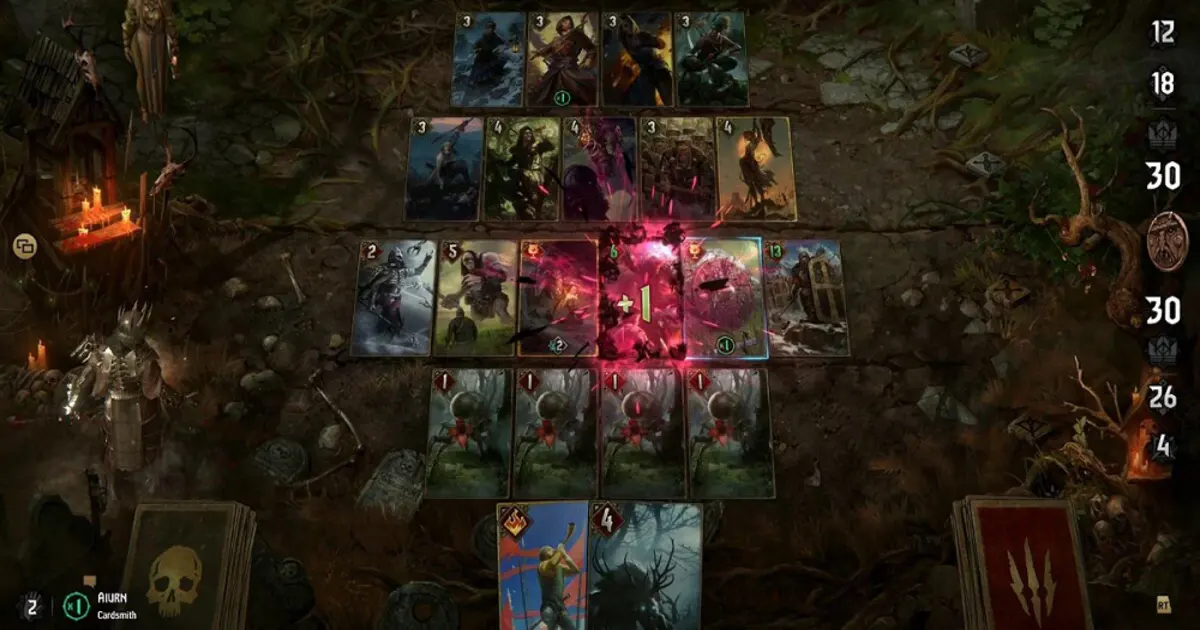
Following Witcher 3's release, the in-game card diversion-Gwent-became a hit among players. Riding this success, the studio launched it as a standalone project. Gwent: The Witcher Card Game is a free-to-play online collectible card game, debuting in 2018. It developed the Wild Hunt mini-game into a full-fledged multiplayer esport. Two players duel, laying down units, spells, and heroes from the Witcher universe on a multi-row board. Matches play over several rounds, with victory going to the first to win two out of three. Success requires building a deck that can outwit opponents: tactical planning, bluffing, and card synergy matter far more than luck. Unlike Witcher 3's mini-game, the standalone version features major balance changes and new mechanics, making matches deeper and more varied. Built on Unity, Gwent launched on PC, consoles, and mobile (iOS, Android). CD Projekt supported the game with expansions (adding factions like Northern Realms and magical card packs like Price of Power), as well as official tournaments and the Gwent Masters esports league. Critics praised Gwent's visual style and original mechanics, though some noted a steep learning curve and slower pace. Still, Gwent carved out its niche, keeping the Witcher universe alive as a competitive online game where fans can lead Northern strategists or monster hordes.
Thronebreaker: The Witcher Tales
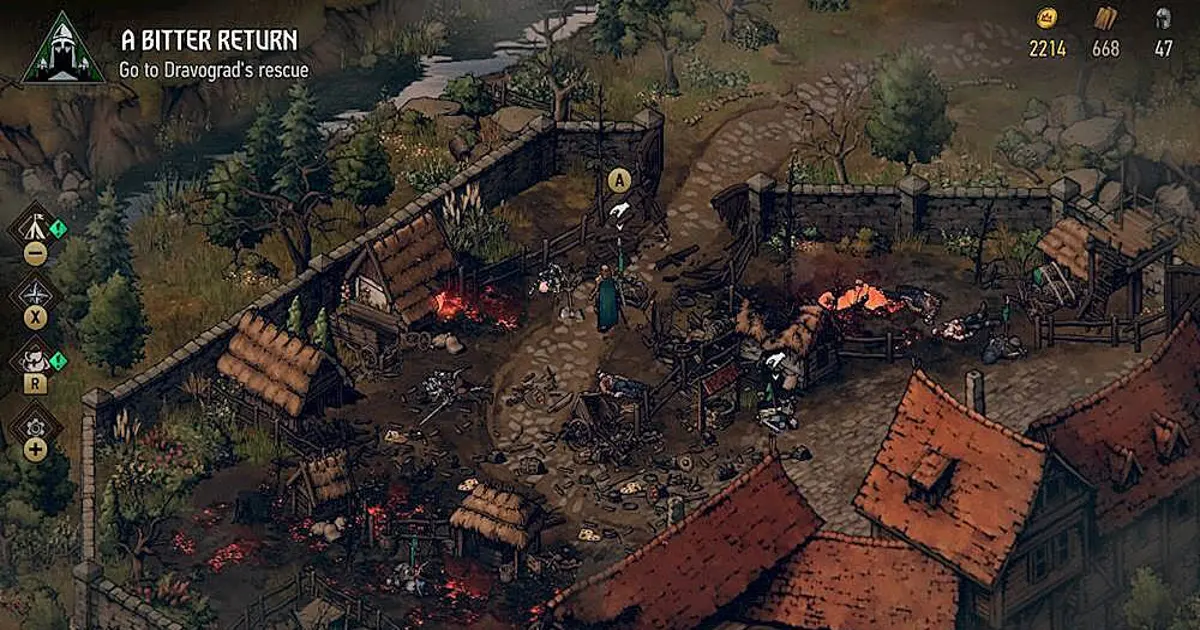
To build on Gwent's success, CD Projekt brought its gameplay back to single-player with Thronebreaker: The Witcher Tales, released in late 2018. This spin-off is a narrative RPG with turn-based card battles-a unique hybrid where players explore the map like a classic RPG, gather resources, interact with characters, and make choices, but all combat and challenges play out as Gwent matches. The story unfolds during the Second Northern War, years before the first Witcher game. The protagonist is Queen Meve of Lyria and Rivia, known from the books. Her kingdoms are invaded by Nilfgaard, forcing Meve to rally her army and confront both external threats and internal betrayals. Over a 30-hour campaign, players lead Meve through various regions, make tough moral choices, and shape relationships with companions. The narrative is non-linear; decisions can lead to lost characters, changes in the army, or alternate endings. True to Witcher tradition, Meve's tale blends war tragedy, personal stories, and surprising twists.
Gameplay is best described as a turn-based strategy RPG rooted in collectible card game mechanics. On the world map, players manage a camp: recruiting new units (cards), upgrading Meve's abilities, and gathering resources. Every encounter is resolved through Gwent matches, often with unique puzzle conditions that require creative solutions-such as stopping bandits before they escape with a bride or helping a troll fend off soldiers using a limited deck. These puzzles add variety and often challenge the player's strategic thinking. Traditional Gwent matches are also present, typically shortened to one round to keep the story flowing. The game boasts beautiful hand-drawn visuals and fully voiced dialogues, matching the quality of the main series. Critics praised Thronebreaker's strong narrative and successful genre blend, though a love of card games helps maximize enjoyment. Ultimately, this project proved the Witcher universe thrives not just as action RPGs but also in experimental formats.
It's worth noting there were other side projects: the mobile AR game The Witcher: Monster Slayer (2021), the now-closed MOBA Witcher Battle Arena (2014), and a planned remake of the first game. But Gwent and Thronebreaker are the most prominent spin-offs, enriching the franchise with new lore and stories, sustaining fan interest while the main series awaited its next act.
The Netflix Adaptation and a Surge in Popularity
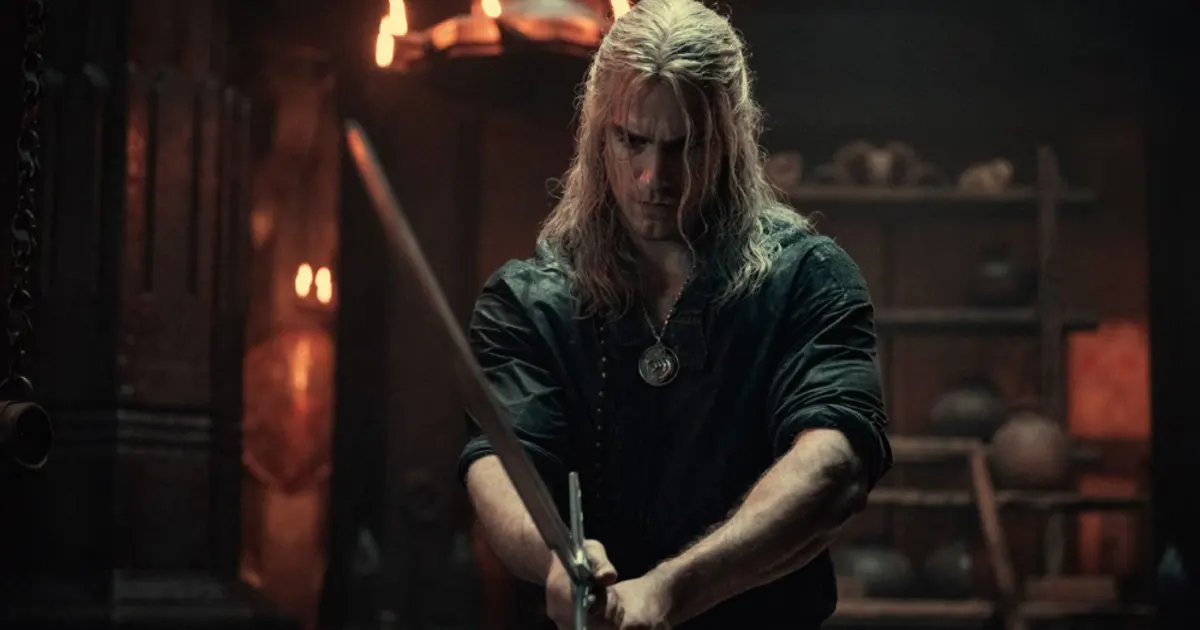
The Witcher's popularity skyrocketed not just thanks to games, but also its expansion into new media. In late 2019, Netflix released The Witcher series, based on Sapkowski's books and starring Henry Cavill as Geralt. The show quickly became a cultural phenomenon, topping global viewership charts. While fans debated its faithfulness, the series introduced a massive new audience to the Witcher universe. This had an immediate impact on the games-many newcomers jumped straight into The Witcher 3. Within a week of the Netflix premiere, Wild Hunt broke its own Steam concurrent player record, peaking at 94,601-higher than at its 2015 launch. Never before had a single-player RPG seen such renewed interest years after release. Daily player numbers soared, and sales of both the game and Sapkowski's books multiplied (in the US, book sales reportedly rose by 562% year-on-year after the show debuted). The series thus served as stellar "advertising" for both the games and the literary original.
It's important to note that the series and games are different adaptations of the Witcher universe, each with its own approach. The Netflix show follows the books, starting with Geralt's early adventures and his introductions to Ciri, Yennefer, and others. The games, meanwhile, act as a continuation: developers took the novels' ending (Geralt's death) and "reversed" it, letting the witcher live on for new stories. Thus, the games answer "what if the saga continued?" while the series adapts the actual events. These differences haven't hurt mutual popularity: many gamers discovered the books, and viewers flocked to the games. Netflix has released three seasons (as of 2023), an animated film (Nightmare of the Wolf), and a prequel (Blood Origin), each reigniting interest in Witcher 3. For example, after Season 2 launched in December 2021, the game again reached 70,000-80,000 concurrent Steam players. The adaptation's impact is hard to overstate: the Witcher brand became even more recognizable worldwide, boosting CD Projekt's standing and fueling anticipation for future franchise projects.
Of course, the show drew criticism from longtime fans for its liberties with the source material, but as popularization goes, it succeeded. At times in 2019-2020, The Witcher was Netflix's most-watched show, even surpassing The Mandalorian in some metrics. Songs from the series ("Toss a Coin to Your Witcher") became internet memes, and Henry Cavill's Geralt became an icon. All this benefited the games: Wild Hunt enjoyed a renaissance, attracting new fans years after release. In short, the Netflix adaptation didn't just expand the universe on screen-it meaningfully shaped the game series' fate, keeping interest high.
Looking Ahead: The Witcher 4 (Project Polaris)
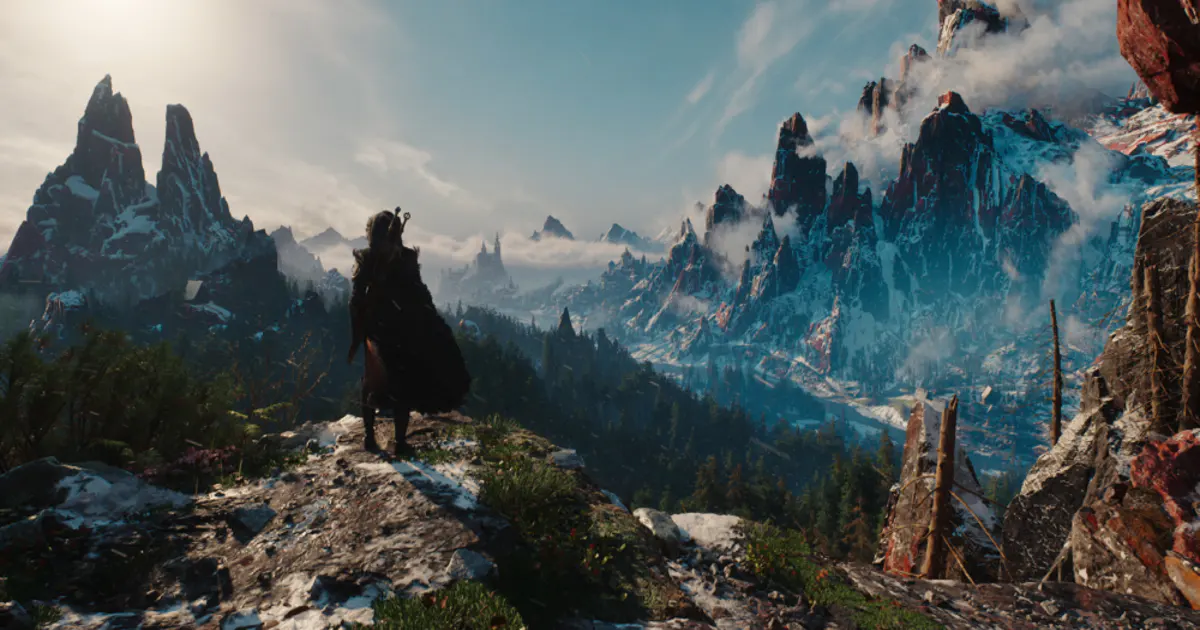
A decade after the third game, fans finally received news of a continuation. In March 2022, CD Projekt RED officially announced a new Witcher game, codenamed Polaris, widely known as The Witcher 4-though the developers emphasize it's the start of a new saga, not a direct sequel. Throughout 2022-2023, the studio gradually revealed its franchise roadmap. Polaris will launch a new AAA RPG trilogy, with all three games planned for release within six years of the first. Thus, Witcher 4 will be the first in a trio with an interconnected story.
The biggest mystery concerned the next main character and storyline. In October 2022, a teaser of a medallion in snow sparked theories-fans spotted a lynx head, hinting at a new witcher school. Finally, in December 2024 at The Game Awards, The Witcher IV was officially unveiled. The cinematic trailer confirmed what many suspected: Ciri is the new saga's protagonist. The footage showed a mature Ciri, having survived the Trial of the Grasses and become a witcher herself, wielding both silver and steel swords-the symbolic legacy of her adoptive father, Geralt. CD Projekt RED confirmed players will control Ciri, shaping her personality and worldview through their choices. Witcher 4's story will start years after Wild Hunt, taking into account players' various endings (the studio hints at elegantly handling past outcomes, so any saved story fits the new canon). For now, details are few: the action will take place somewhere in the Northern Kingdoms, and Geralt will appear but not as the protagonist (fans even recognized Doug Cockle's voice in the teaser). A new epic awaits, with Ciri facing fresh threats while stepping into the White Wolf's monster-slaying boots.
Equally important are the technological changes. CD Projekt RED has chosen Unreal Engine 5 for all future games, including Polaris. After years developing REDengine, the studio believes collaborating with Epic Games and adopting UE5 will speed up the integration of cutting-edge graphics and simplify multi-platform optimization. For fans, this means Witcher 4 will boast all modern tech: detailed worlds, realistic physics, Lumen global illumination, nanite objects, and more. In mid-2025, a technical demo showcased UE5's capabilities on PS5-promising an even deeper, richer open world, focusing not just on size but on meaningful, interactive content. CD Projekt's goal: "make the new open world deeper, not just bigger" compared to Wild Hunt, filling it with engaging activities rather than empty space. The world's size is promised to be "roughly similar to the third game"-still massive.
Development is now in full swing. From pre-production in 2022-2023, the project entered full production in late 2024. By March 2025, over 400 CD Projekt RED staff were working on it, fueling hopes for an ambitious title. The new trilogy is led by veteran game director Sebastian Kalemba (Witcher 3 animation lead and Cyberpunk 2077 key figure). The team is learning from past mistakes-testing builds on all target platforms (PC, PS5, Xbox Series) early to avoid technical issues at launch. CD Projekt declares Witcher 4 their most ambitious game ever: they aim to set a new quality bar for open-world RPGs and meet fans' high expectations. Such confidence is promising.
Of course, patience is needed. Analysts and developer hints suggest Witcher 4 won't launch before 2026-the studio refuses to rush at quality's expense. Still, knowing CD Projekt's dedication to lore and detail, fans can expect a grand return to a world of monsters and legends. Many are thrilled to continue the story through Ciri: her world-hopping powers and Elder Blood heritage open vast narrative possibilities. Geralt's legacy isn't forgotten-he's likely to appear as mentor or key NPC, ensuring generational continuity.
In summary, The Witcher 4: Polaris promises a new era for this iconic franchise. With advanced technology, a fresh protagonist's perspective, and the enduring spirit of dark Slavic fantasy, it attracts both Witcher veterans and new players. The franchise has journeyed from a humble 2007 debut to a global phenomenon with millions of fans. Ahead lie new legends and challenges. For now, fans revisit the show, reread the books, and replay Wild Hunt to prepare for what Polaris will bring. One thing is certain: the Witcher's journey is far from over, and its most exciting chapters are yet to come.